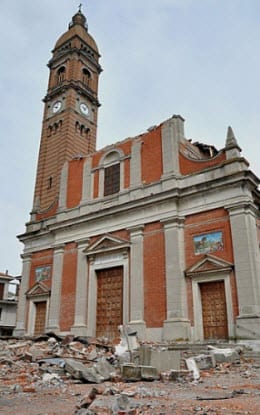
According to catastrophe modeling firm AIR Worldwide, the second significant seismic event to hit northern Italy in just over a week occurred at 12:55 p.m. local time on Tuesday. The US Geological Survey issued a moment magnitude of 5.8 for the event. The Institute of Geophysics and Volcanology (INGV) issued a local magnitude of 5.8. Focal depth is estimated at between 9.6 km (USGS) and 10 km (INGV), making this a shallow event. It is still in the early aftermath of this event. Based on reports so far, however, AIR estimates that insured losses from this event will not be significant.
“Seismicity in Italy is largely controlled by the collision of the Italian-Adriatic peninsula against the European continental region, an interaction that has produced the western Alps and uplifted and thickened the Apennine belt,” said Dr. Mehrdad Mahdyiar, senior director of earthquake research at AIR Worldwide. “There is considerable variation in the level of seismic activity from region to region within Italy. However, the INGV classifies the Apennine mountain region as an at-risk area for earthquakes. The focal mechanism of today’s event suggests a reverse faulting trending in a west-east direction.”
The quake was felt from Piedmont in northwestern Italy to Venice in the northeast and as far north as Austria. The earthquake was centered in Modena province, about 40 km north-northwest of Bologna and 320 km north-northwest of Rome.
Local officials report that up to 70% of homes in Cavezzo have suffered severe damage or collapse. Several buildings in Mirandola, including a historic cathedral and a factory, have been damaged. In keeping with the expectations of AIR engineers, most of the significant damage seems to have been sustained by unreinforced masonry structures, which are characterized by their limited ability to resist earthquake lateral loads without cracking or suffering wall collapses. Depending on the level of earthquake-resistant design implemented in the local reinforced concrete structures, damage to beam-column connections, walls, and to other structural elements can be expected in this event.
AIR is continuing to monitor the situation and will provide updates if warranted.
